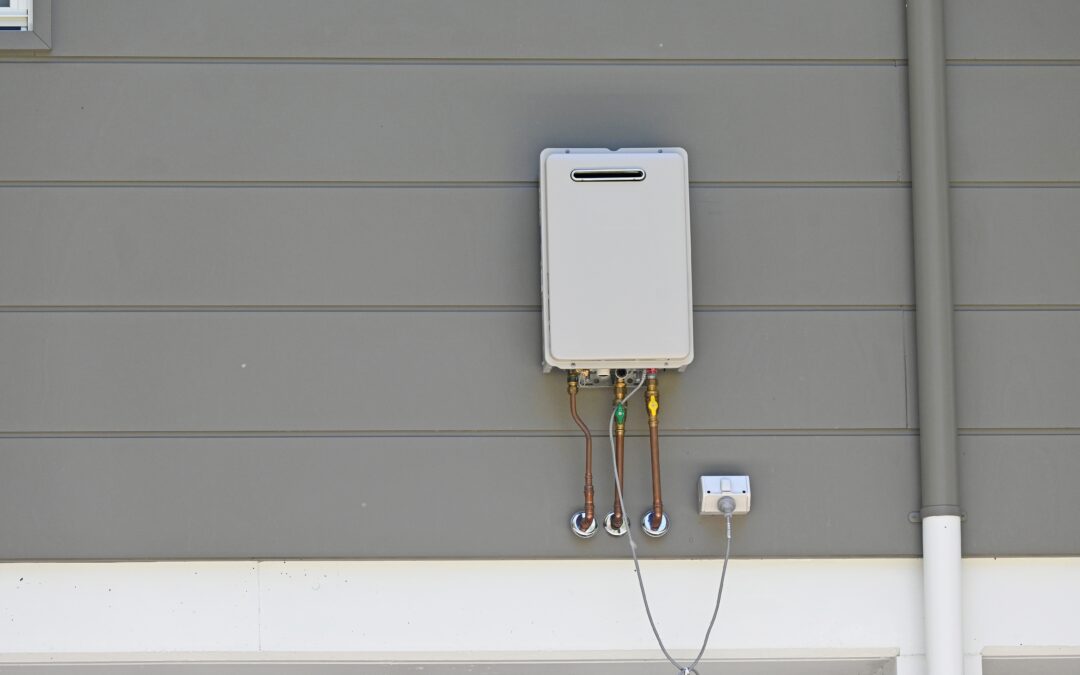Have you ever felt like you had to choose between starting a load of laundry, taking a relaxing hot shower, or turning on the dishwasher? If you had chosen to install a tankless hot water heater in your home, you wouldn’t have to. These unique alternatives to a classic tank water heater offer a consistent and virtually limitless supply of hot water — no choosing required. For anyone who’s ever had to wait to take a shower because the water heater needed to refill itself, this smart innovation can make life a great deal more comfortable and convenient.
Tankless Water Heater vs. Traditional Water Heater
A tank water heater holds a specific amount of water, heating it with electricity or a gas burner. This ensures the hot water is ready to be piped into all your plumbing fixtures and used until the supply runs out. These heavy cylindrical appliances are usually fairly large and are typically installed in an indoor closet, down in a basement, or underneath a house. While their tankless counterparts may also be installed in the same areas, they are hung on a wall and won’t require nearly as much square footage.
A tankless design, rather than holding the desired water in a storage tank, instead relies on heating the water as it passes through the heater itself. Just as tank water heaters are available in both electric and gas-heated variations, so are tankless water heaters. Homeowners looking to make the switch simply have to select a model appropriate for their existing setup or work with a plumbing professional to change their heating source.
Does a Tankless Water Heater Work in Different Climates?
Large, cylindrical tank water heaters work in various temperatures by being wrapped, insulated, or installed in the temperature-controlled areas of the home to prevent weather from affecting functionality. Because of the minimal design and efficient process of tankless styles, the ground temperature will need to be considered when selecting a model. Essentially, the colder the groundwater in your area, the harder your tankless heater will need to work to bring your on-demand hot water up to your desired temperature.
Luckily, a tankless water heater in San Diego won’t be overworked, even in the dead of winter.
Note: Make sure to discuss your water temperature expectations with the plumbing professional who’s selecting and installing your tankless heater. This way, they can offer appropriate recommendations.
How Much Hot Water Can a Tankless Water Heater Provide?
A tankless hot water heater will be mounted somewhere inside or underneath the house during installation and will need to be connected to a cold water line to function. Additionally, depending on the available heating source, either an electrical source or a gas line will be connected to heat the water as it passes through. In the same way that overall demand factors into selecting an appropriate gallon volume in tank heaters, your GPM — gallons per minute — will factor into choosing a tankless water heater.
Every water source in your home, from your kitchen faucet tap to your showerheads, uses a specific amount of water flow per minute to operate. Determining your overall flow needs is a matter of simple addition: find the GPM demand of each water source and add together any and all you’d like to use simultaneously. Tankless heaters are offered with capabilities that typically range between 4 GPM (e.g., a shower and one appliance, running simultaneously) up to 8 GPM (e.g., two showers and a large appliance, running simultaneously). Installing the correct GPM ability for your needs will help keep energy costs low.
Is a Tankless Water Heater Installation Right for Your Needs?
If you’re ready for on-demand hot water that’s fast, easy, and an energy-efficient alternative to tank water heaters, it’s a great time to make the switch. Why wait for your next hot shower? If you’re looking for a tankless water heater replacement in San Diego and the surrounding areas, contact Carini today!

